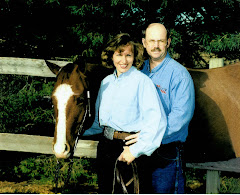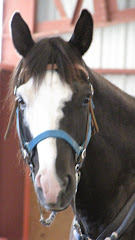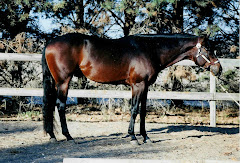I have given 2 lessons to adult riders who are new to Centered Riding. Each lesson was totally unique, yet focused on the basics. The first lesson was groundwork and the 2nd lesson was on the horse. The first lesson is a rider, and who has previously taken lessons from me. The 2nd lesson was a rider new to horses and new to lessons with me.
There is a lot of information that could be given in just teaching the basics, and, as instructors, we shouldn’t do that. But that is what I did with this lesson. The rider, a good friend of mine, had only 1 day with me. And she has taken lessons from me before. And she lives out of state! But, the day before, and the day of the lesson, it rained, and rained, and rained! Yes, we could have pulled horses out of the muddy lot and cleaned them up. We could have used the indoor arena. But it would have been messy, and nosiy with all the rain pelting the roof.
We did an inside lesson with groundwork instead. That made it possible for me to teach all the basics. We went over the 4 basisc: Centering, Building Blocks, Soft Eyes and Breathing. Centered Riding is also about Grounding and Clear Intent.
We started with Grounding the feet and finding the “Bubbling Spring”. This is the area on the bottom of the foot where the middle of the stirrup is placed. Tap on the bottom of the foot until you find an area that feels different. This could be a tingling or just feel a little dull. We can do this Grounding to ourselves, or we can have someone else find the area. Interesting, this area is a little further back than most people realize. The Bubbling Spring absorbs the concussion of the body’s movement.
Deep Breathing releases stress and is relaxing. Breathe deep into the abdomen. Fill your lungs with air, moving the diaphragm down. Breathe in through the nose and out through the mouth, sighing quietly. During all the exercises, we practice deep breathing. Deep breathing needs to become natural. As deep breathing relaxes the rider, the horse relaxes.
With Soft Eyes, we use our peripheral vision and see the world around us. With hard eyes, we see only what we are focused on. Hard eyes also happen when we concentrate too hard. Hold your arms out in front of you, focus on something with hard eyes, and take your arms in a half circle out to your sides. Stop moving your arms when you can’t see them. Take notice of how far your arms went out to your sides. Now, with soft eyes, do the same exercise. See how much further the arms went out to your sides with soft eyes.
Our pelvis is a bowl. At the bottom of the pelvis is our seat bones. Our Center is in the top center of the bowl, “floating” freely. On the ground, we placed our hands on our abdomen, one hand in front, with our thumb on our belly button, and the other hand on our lower back, directly across from our front hand. Our center is between our hands. Once we found our center, we found our neutral pelvis. We tipped our pelvis slowing front wards and backwards, until we tip ever so slightly front and back, settling into a spot where we don’t move front or back. You have found your neutral pelvis.
Building Blocks. Think about stacking children’s building blocks. If the blocks aren’t stacked properly, they will tumble down. If our body isn’t in skeletal alignment, there will be no balance. Poor balance inhibits the horse’s movement. Good balance allows the horse to move freely. As with finding the neutral pelvis, we found our “Building Block” balance in the same way. Move each body part back and forth, a little less each time you move it, until you find the place where it doesn’t move. Remember the head, and move the neck the same way, back and forth, and stretch the neck up.
And always ride with Clear Intent. Have a plan, a goal, an awareness. Yet, don’t be so specific with what you want that you are unbending and unchanging. Your horse is unpredictable and you may have to change your plan for the day. This is fine, as long as you have clear intent. Be aware of where you are going, where you want the horse to go, what you want to do and what you want the horse to do.
I’ll talk about the new rider and her lesson in the next blog. I will go over more exercises for each Centered Riding technique in later blogs.
Thanks for coming along on my Centered Riding journey with me.
Turning Night to Day
9 years ago







No comments:
Post a Comment